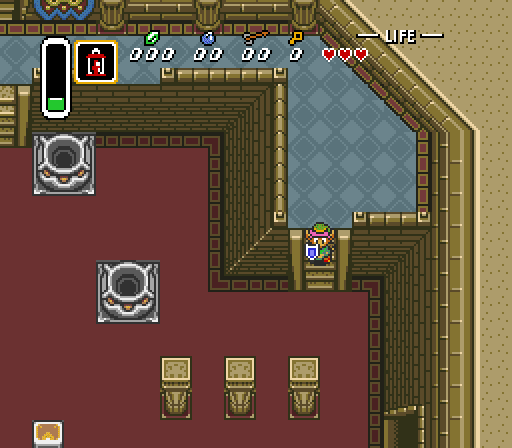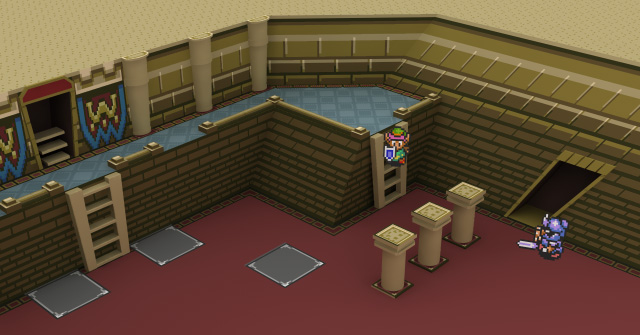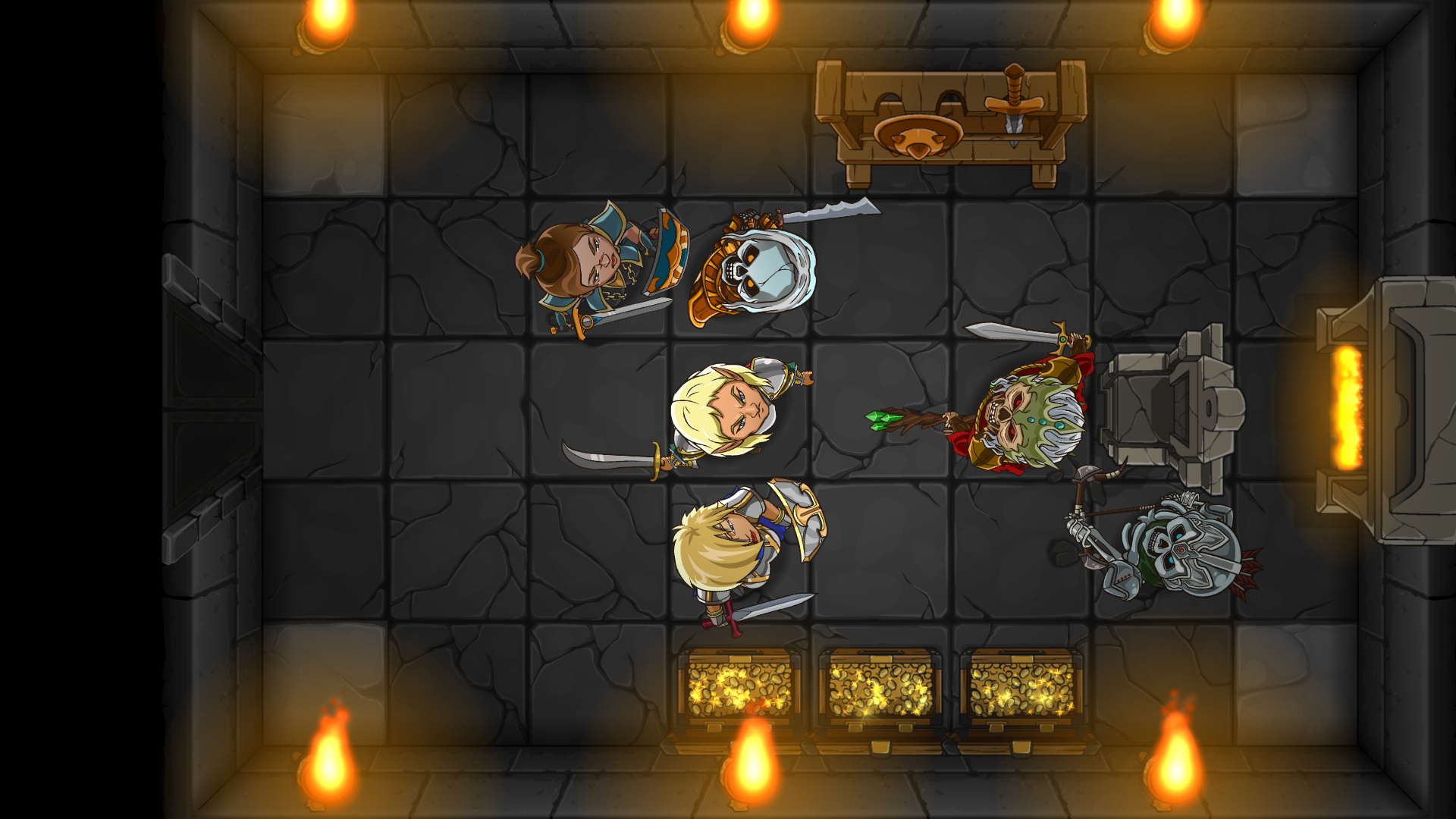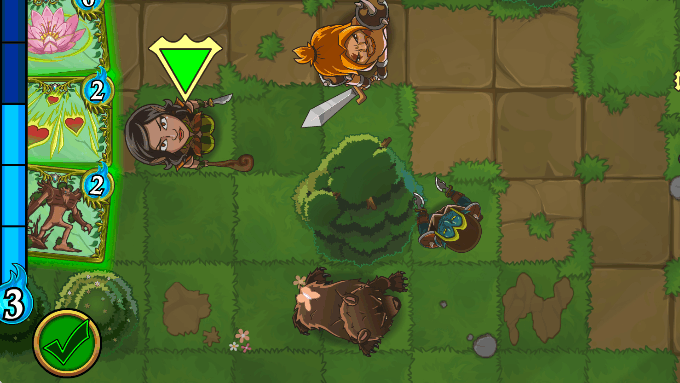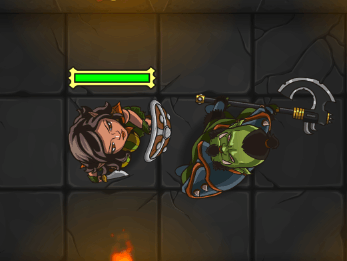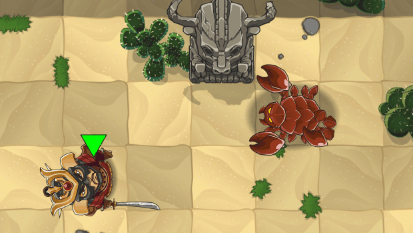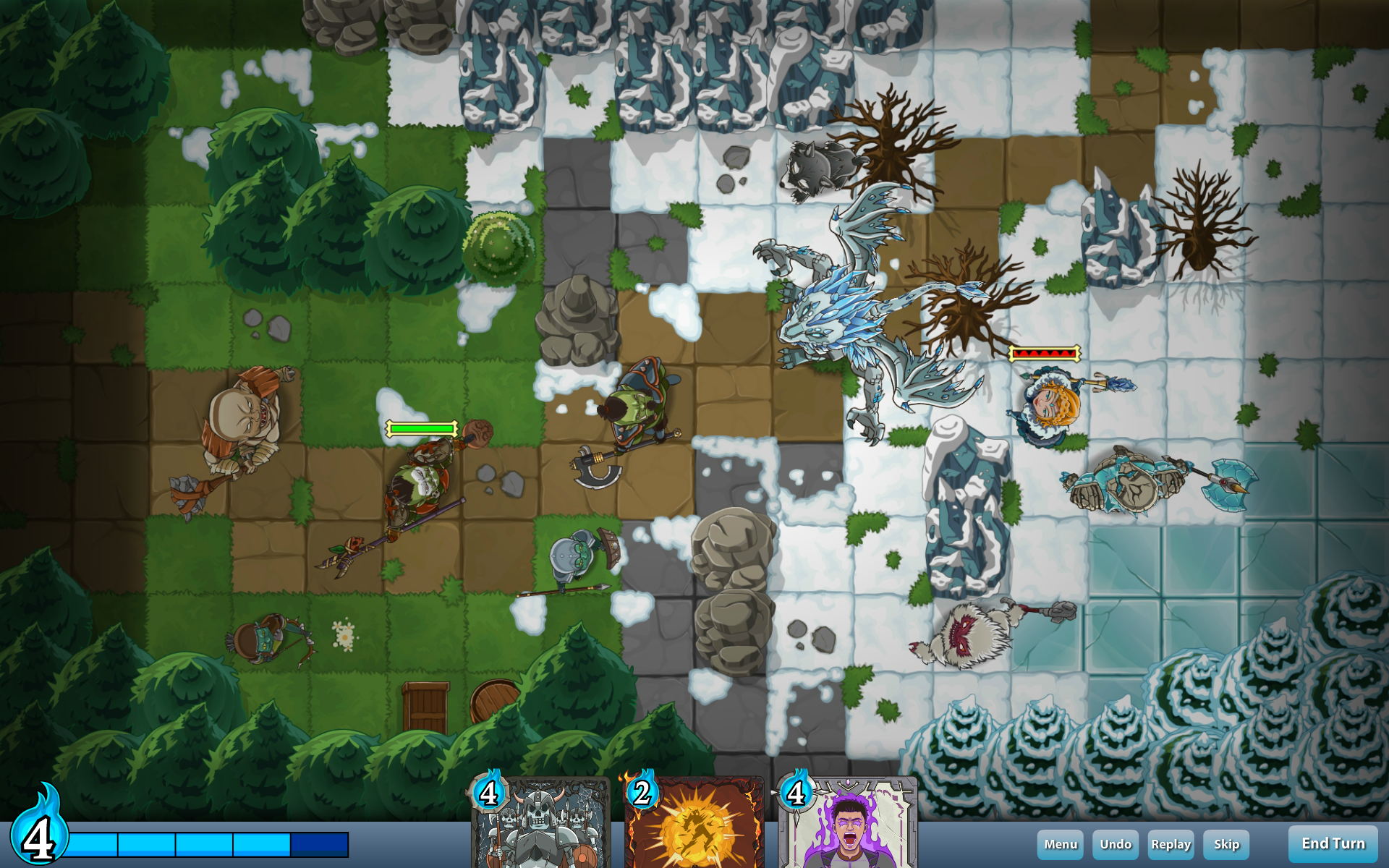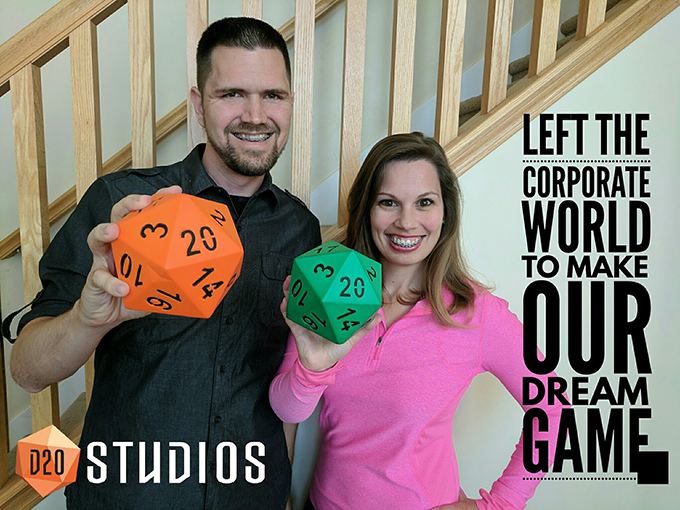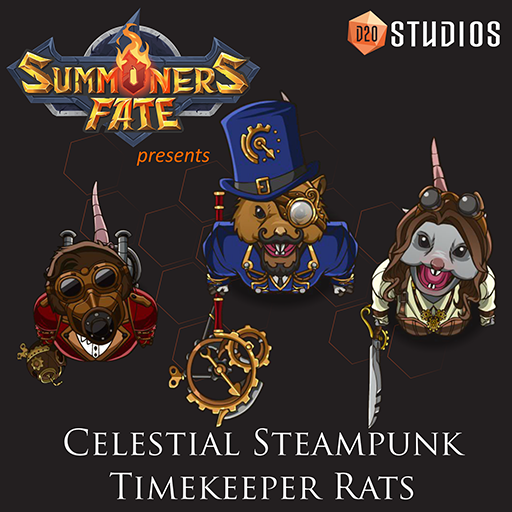Already much better, I'd say.
The space to the right of the cards seems awfully empty - is 3 the maximum amount of cards?
Thank you for pushing me on this, I owe you one for bringing this to my attention and I do think this looks much better for PC. Yeah, I'm troubled by that empty space on the right as well, not quite sure what to do about that yet. Do you think it would help to condense the mana to a Diablo style "orb" instead of a horizontal bar, then maybe shift the menu/undo button over to the right with end turn? Maybe make the buttons square and configure them in a rectangle? I'm not entirely sure...
Three cards is the current max (it is possible to go over 3 with special abilities), but for the most part, the player will always have 3 cards in their hand since you draw back to three cards after you end your turn. I wanted to avoid the "top decking" problem often experienced in MtG or Hearthstone, and so far I've found it is more fun to always have a choice of cards rather than a single card in late game.
The scale is much better now for a PC version, though the perspective is off in couple of items. Look at the door and imagine two of them in adjacent tiles, they would cut into each other. The barrels look like they are toppling, the two bookshelves look like we are viewing each from a different spot... disregard this if they are just placeholders.
By the way, have you played
Warhammer Quest ?
Thank you! I owe you a lot as well for the feedback and push. I don't mind hard criticism, especially when it drives improvement.
Indeed, I've played Warhammer Quest all the way through, as well as the original board game on which it is based. Excellent graphics, easy to get into, and very engaging until you get to the upper levels and it starts to feel slow and repetitive. Once my characters hit max level, I didn't feel there was any more growth and that's why I stopped playing.
Perspective: When I was working on the designs for our top-down, I used several games as a cross-section comparison. Warhammer Quest was definitely a prominent example. Legend of Zelda, Link to the Past, was another. I also considered isometric perspective, but dropped it (because it was not at all intuitive to command units with the skewed angle nor was this perspective conducive to easily readable directional facing, which is important for many tactics, like "backstab" or "shield block").
Let me show you some screenshots and share some of my thought process on how we landed with perspective:
Warhammer Quest
Here are two screenshots that I think show the strengths and weakness of their perspective:
This first screenshot is a "best case" example. The game uses 3D graphics but camera is fixed at bird's eye (similar to ours). Creatures like the spiders look gorgeous, and the floor textures and lighting VFX are excellent.
But look what happens here at smaller scale and with humanoid characters like Orcs and Goblins. Personally, I have a hard time distinguishing what is happening here. The UI doesn't clearly indicate important things without "digging" through menus (like the attack strength and life of the enemies relative to each other). All I can see is a health bar relative to a specific character - but does that life bar take 1 hit, 2 hits, or 5 hits to deplete? Also, I'm missing all of the detail on these characters as all I can see is the top of their heads. All of the cool features of the character in their face are not visible. If you asked me to find the archer in this scene, it would take several seconds to process it and identify him.
Legend of Zelda - Link to the Past
The staple classic of the SNES era, I love this game because it conveys so much with so little.
The perspective is entirely incorrect (from a true 3D perspective) but after playing only a few minutes, my brain becomes comfortable with it. By having the character on a slanted perspective, I can connect better with him - I see his face, his eyes, etc. The walls offer some depth. The contrast/colors allow me to easily recognize where my character is and what is on the screen.
There are absolutely problems with the perspective creating unnatural possibilities in the 3D world. In fact, this guy here clearly shows you
in his article about it.
Yikes, Zelda is not pretty in the 3D world!
Another look at Summoners Fate
Ok, now let's take another look at Summoners Fate and you can start to see why I've made some of the decisions I have about the perspective. First, rendering a Zelda style side-view sprite didn't work for us for a few reasons. First, you have to draw each perspective, limiting the ability to freely rotate the character (which is important if you want to denote accurate facing for an archer shooting at an angle that isn't a perfect 90 or 45 degree increment). Second, the cost to develop animations for a side-view character is 3-4 times more expensive and demands over 20 times more file size and GPU memory. Third, transitions for a side view character do not blend naturally for high resolution graphics due to uncanny valley effect. It works great for a 16Bit game, due to the low frame count, but when you're running 60FPS, it's noticeably awkward.
I chose 2D over 3D for several reasons. Artistically, I think 2D has more power than 3D to bring out the unique identity of each character, even at small scale. Even characters that are similar in appearance (the Elf Fighter mage and the Paladin) can be quickly identified at a glance. When the characters aren't looking up at you, it's still possible to see their eyes and expression (important for maintaining connection with them). 2D vector in particular scales much better: at 4K resolution, these characters only look better, while high resolutions of 3D model show all the flaws (low poly textures, pixelation, seams, flaws in the mesh mapping, etc.). In 10 years from now, Summoners Fate will still have a classic look (because the art is a style choice) but 3D games will look very dated by comparison to modern standards.
The other major reasons for 2D are development cost, file size, and performance demands. I don't think indies should attempt building 3D games (unless you have personal expertise with 3D modeling) because costs are over 10X that of 2D games for the initial art alone and multitudes more cost and time to optimize and polish.
Ok, now let me be honest about the flaws and problems. Absolutely, many of the items have an unnatural perspective (including the characters themselves) and would not translate to an accurate 3D representation. These include things like the barrels, chests, doors, etc. The torches are also a little weird, but they "felt" better to me having the flames always point up because using a natural perspective looks very awkward and the brain processes fire as flowing up. Another major challenge I have with our perspective is z-index (layering of items on top of each other). Generally, I can get away with things on bottom of screen layering on top of things higher on the screen, but in many cases, this creates weirdness, like a dragon's foot layering above a character's face.
With some of my thought process shared here, how do you feel about my design choices? Would you rather play a game with absolute realism to perspective, or, do you think there is some value in "breaking the rules" a bit in order to emphasis some key details (such as character expression)? I am genuinely curious as the visual style and perspective is something I have wrestled with for a long time and also the top reason why I had to push the release date out roughly another year from my initial estimates.
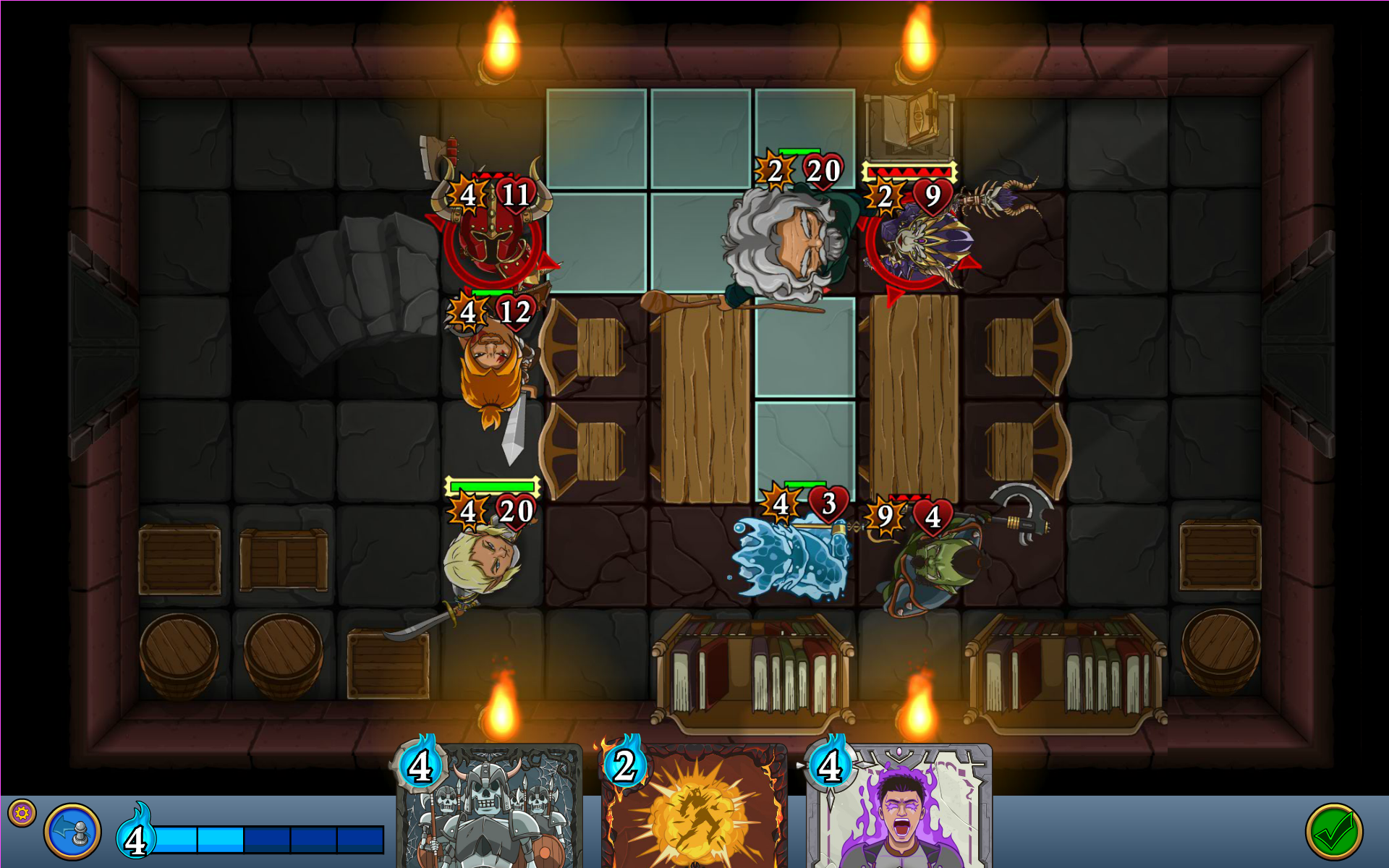







![Glory to Codexia! [2012] Codex 2012](/forums/smiles/campaign_tags/campaign_slushfund2012.png)





















